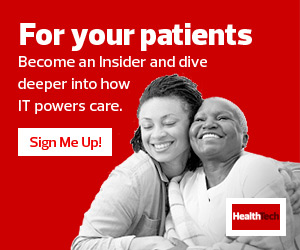Physical security for healthcare systems is evolving along with changing needs. It’s no longer enough to know the location of secure entry points; workers need to be able to track movement through those entry points into facilities. Are the right people entering at the right points of entry? Are they going to the right places, or are they entering areas they shouldn’t?
Technology has also evolved to keep up with these changing needs, with more sophisticated video monitoring, modernized alerts and flexible solutions that can adapt to diverse settings.
Modernizing Physical Security in Healthcare
Tracking movement through a facility is not as complex or even as cost prohibitive as it has been in the past.
Robust badge scanning and simple tap-and-go access for employees at different entry points allow security teams to understand who is using what entrance and when. For visitors and patients, a smartphone app with basic wayfinding capabilities can steer them directly to where they need to be.
The next layer, the monitoring platform, could be something as basic as a legacy security camera system or something as current as a cloud-based video surveillance solution, which can offer modern, more precise tools for tracking someone through a facility.
READ MORE: Extend the value of physical security systems with enhanced video surveillance.
Improved Infrastructure Supports Physical Security
With any investment in new and emerging technology, there will be an additional strain on the existing environment. Video data and video monitoring have higher consumption values than passive sensor monitoring, for example. Also, if there’s an artificial intelligence solution in use, that could require upskilling personnel to better understand the tool.
It’s critical that a healthcare system’s infrastructure can handle the added burden. Issues such as whether the security platform should be isolated through network segmentation and how the backup power and recovery plan works in the event of a disaster should be considered.
DISCOVER: Learn 3 ways to better integrate physical security with IT systems.
Physical Security Beyond the Pandemic
Though workplace violence against healthcare workers was on the rise before the pandemic, the global health crisis has made the situation worse.
Pandemic protocols such as temperature checks and mask requirements have added more to the list of what hospitals must monitor. Temporary setups such as tented areas in parking lots for mass testing and vaccination have also provided security challenges.
Healthcare systems have learned that they need to have flexible security solutions that can be easily and rapidly deployed to diverse environments. Improved safety ensures a better quality of care for patients and providers. Nurses, doctors and all hospital employees need a safe work environment in order to help their communities.
This article is part of HealthTech’s MonITor blog series. Please join the discussion on Twitter by using #WellnessIT.












